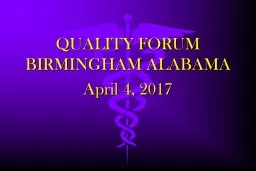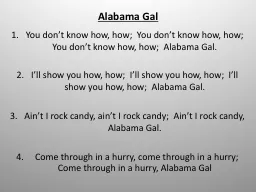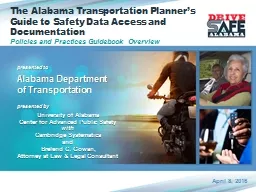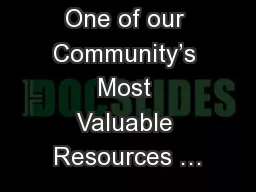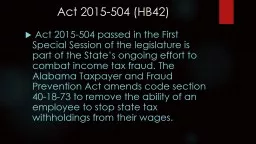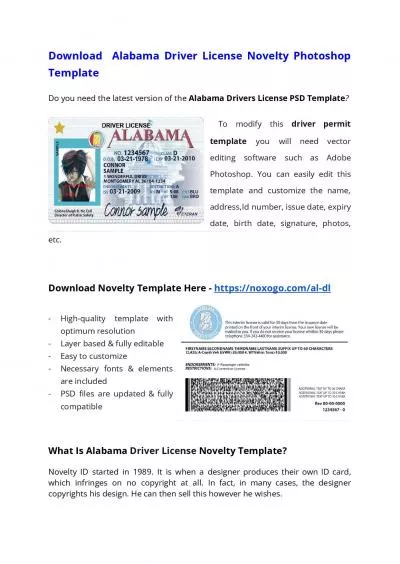PPT-QUALITY FORUM BIRMINGHAM ALABAMA
Author : lindy-dunigan | Published Date : 2018-10-12
April 4 2017 ILLNESS IMPAIRMENT AND THE DISTRESSED PHYSICIAN Jim Harrow MD PhD Medical Director Alabama Physician Health Program DISCLOSURES Dr Harrow has
Presentation Embed Code
Download Presentation
Download Presentation The PPT/PDF document "QUALITY FORUM BIRMINGHAM ALABAMA" is the property of its rightful owner. Permission is granted to download and print the materials on this website for personal, non-commercial use only, and to display it on your personal computer provided you do not modify the materials and that you retain all copyright notices contained in the materials. By downloading content from our website, you accept the terms of this agreement.
QUALITY FORUM BIRMINGHAM ALABAMA: Transcript
April 4 2017 ILLNESS IMPAIRMENT AND THE DISTRESSED PHYSICIAN Jim Harrow MD PhD Medical Director Alabama Physician Health Program DISCLOSURES Dr Harrow has no disclosure of real or . Congratulations, the decision to buy a Walk In Tub will transform your life. Safety and independence never felt so good. Just imagine being immersed in a bath of warm water with therapeutic champagne like air bubbles caressing your body. You start to feel tingling as blood starts to flow more freely. You relax in the warm water knowing you can safely take a private bath. You don’t know how, how; You don’t know how, how; You don’t know how, how; Alabama Gal.. I’ll show you how, how; I’ll show you how, how; I’ll show you how, how; Alabama Gal.. Ain’t. Citizen Protection Act . . Its Current Impact on Your Business. For The Members of the Greater Birmingham Apartment Association and . The Greater Birmingham Association of Landscape Professionals. Video Presentation. . ELACC7RI3: Analyze the interactions between individuals, events, and ideas in a text (e.g., how ideas influence individuals or events, or how individuals influence ideas or events). . 4. th. grade. Alabama History. Chapter 1 Lesson 1. Objectives. Social Studies . 1. Identify historical and current economic, political, and geographic information about Alabama on thematic maps.. 4. Describe the relationship of five geographical regions of Alabama to the movement of Alabama settlers during the early nineteenth century.. April 8, 2016. The Alabama Transportation Planner’s Guide to Safety Data Access and. Documentation. P. olicies and Practices Guidebook Overview. University of Alabama . Center for Advanced Public Safety. Board. Partnership Event: . Adult Safeguarding under the Care Act, and its interface . with . Domestic Abuse. Tuesday . 10th November, 2015. 9.00- 1.30pm . VENUE:. Tally Ho-Lord Knight Suite. Pershore Road, Edgbaston . . Your Local Hospital. 1. Keeping . Alabama Healthy. Alabama hospitals are proud to provide care to our communities 24 hours a day, . 7 days . a week, 365 days . a . year.. Every year, we serve thousands of individuals and support other medical infrastructure, such as doctor’s offices, home health agencies … health services that are not often available in communities without a hospital. America. Dane S. VanDervoort. 1. , Chong Ma. 2. , Mark G. Steltenpohl. 2. , Joshua J. Schwartz. 3. 1. Geologic Investigations Program, Geological Survey of Alabama, Tuscaloosa, Alabama . 35486. 2. Department of Geosciences, Auburn University, Auburn, Alabama . Dr. Ira . W. Harvey. The University of Alabama. January 15, 2015. 1. 2. Walt Kelly: . The Pogo Papers . If “We have met the enemy and he is us,” how did we obtain “enemy” status?. 3. Walt Kelly: . Individual & Corporate Tax Division. . CPE Training. January, 2016. Lynn Schoener, CPA, FAS II. (334) 353-8045. lynn.schoener@revenue.alabama.gov. Andrea Wyatt, Revenue Examiner III. (334) 353-9447. Curriculum and Instruction Quarterly Meetings October 2013 Alabama State Department of Education Words from Dr. Bice Plan 2020-Our Vision Every Child a Graduate – Every Graduate Prepared for College/Work/Adulthood in the 21 Alabama Driver’s License Template, Alabama Driver’s License Template Download, Alabama drivers license PSD template, Drivers License Template, Photoshop PSD template, USA Driver License Template, USA Id template Adeetya's Kitchen & Furniture in Pune offers a selection of top-quality kitchen trolleys to maximize storage space and improve the functionality of any kitchen. https://adeetyas.com/high-quality-kitchen-trolleys-in-pune.php
Download Rules Of Document
"QUALITY FORUM BIRMINGHAM ALABAMA"The content belongs to its owner. You may download and print it for personal use, without modification, and keep all copyright notices. By downloading, you agree to these terms.
Related Documents

